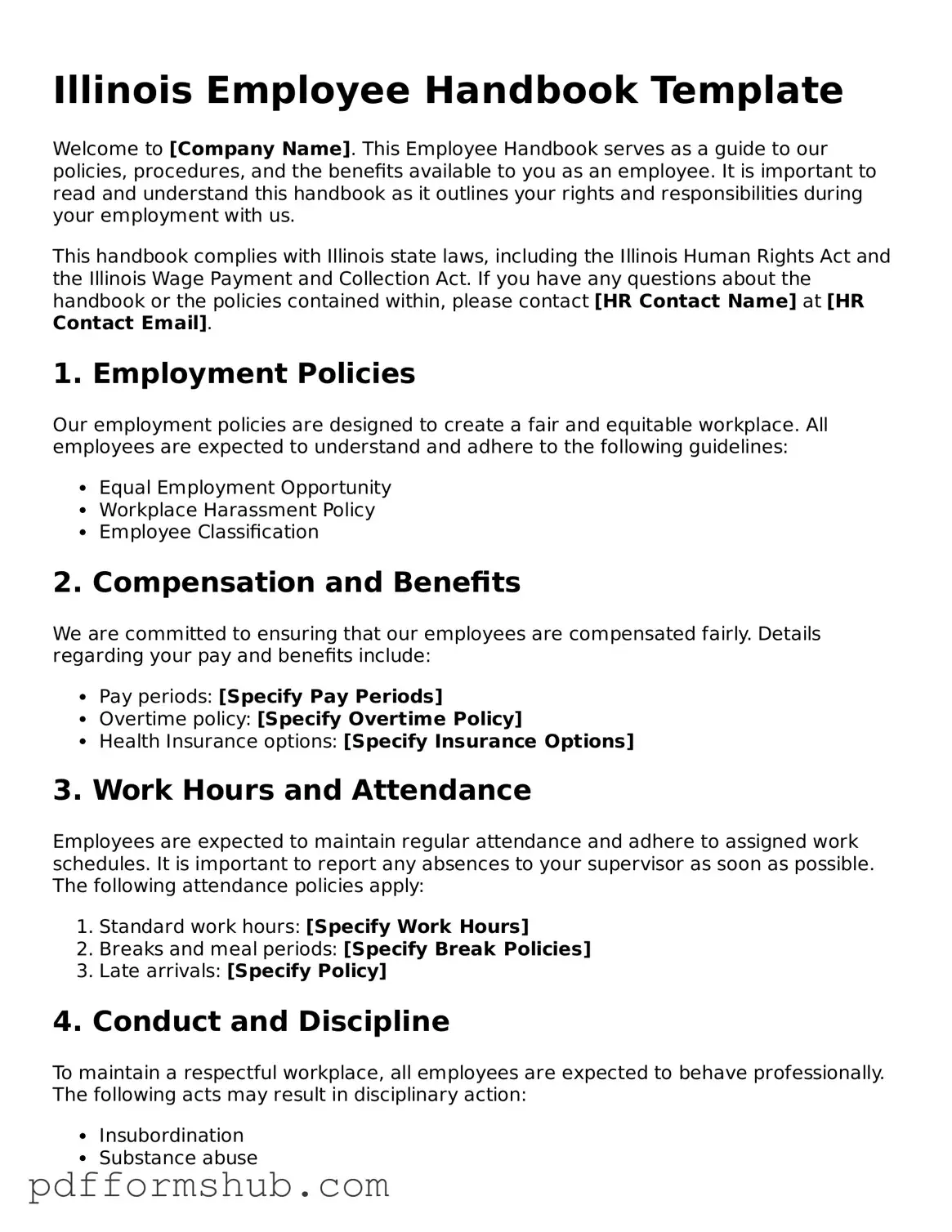Creating a comprehensive employee handbook is essential for any organization operating in Illinois, as it serves as a vital resource for both employers and employees. This handbook outlines the company's policies, procedures, and expectations, helping to foster a positive workplace culture. Among its key components, the handbook typically includes information on employee rights, workplace conduct, benefits, and grievance procedures. It also addresses topics such as attendance, dress code, and disciplinary actions, ensuring that employees understand what is expected of them. Furthermore, the handbook can help protect the organization legally by clearly communicating policies and minimizing misunderstandings. In addition, it can serve as a valuable training tool for new hires, allowing them to quickly acclimate to the company's environment and values. Overall, the Illinois Employee Handbook form is an essential document that helps bridge the gap between employer expectations and employee rights, creating a harmonious workplace where everyone can thrive.
